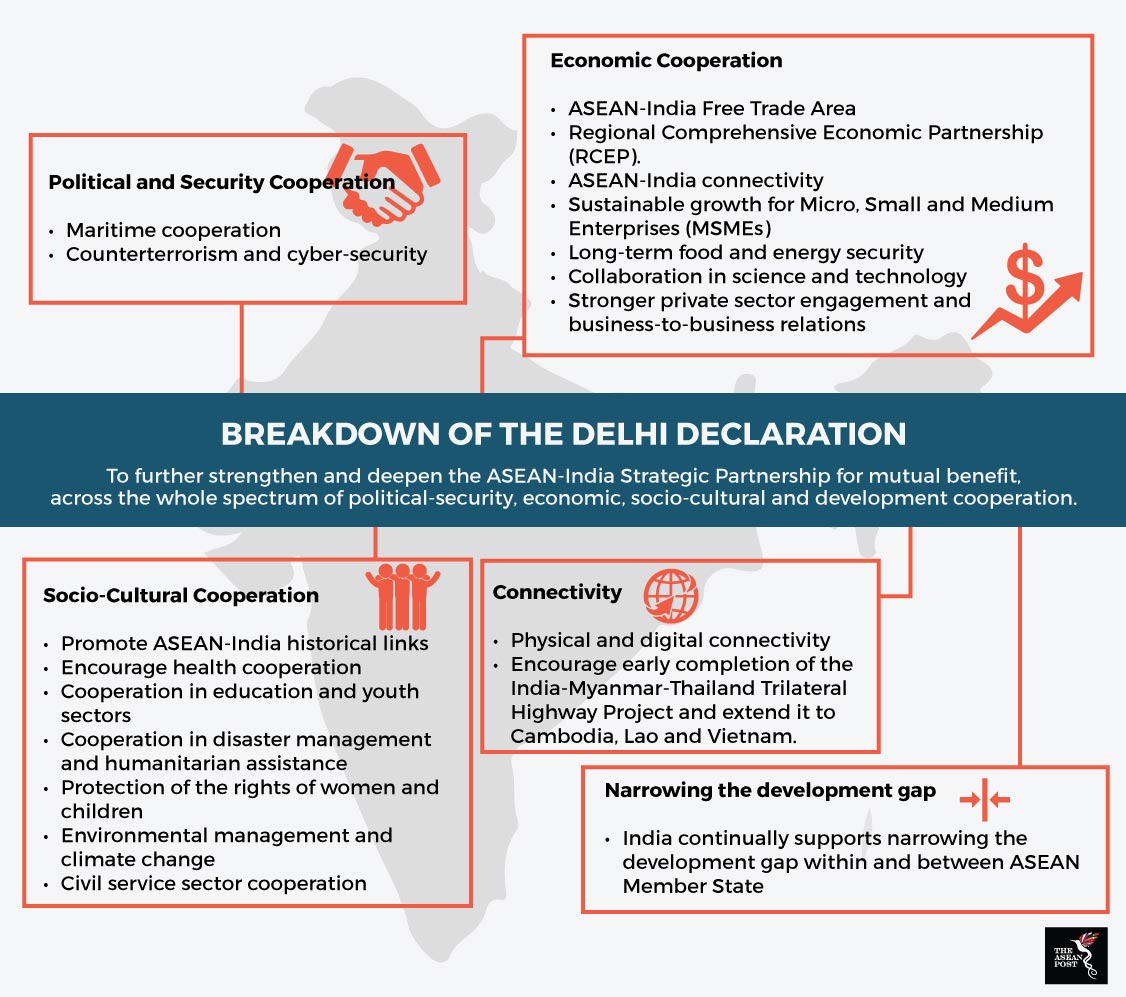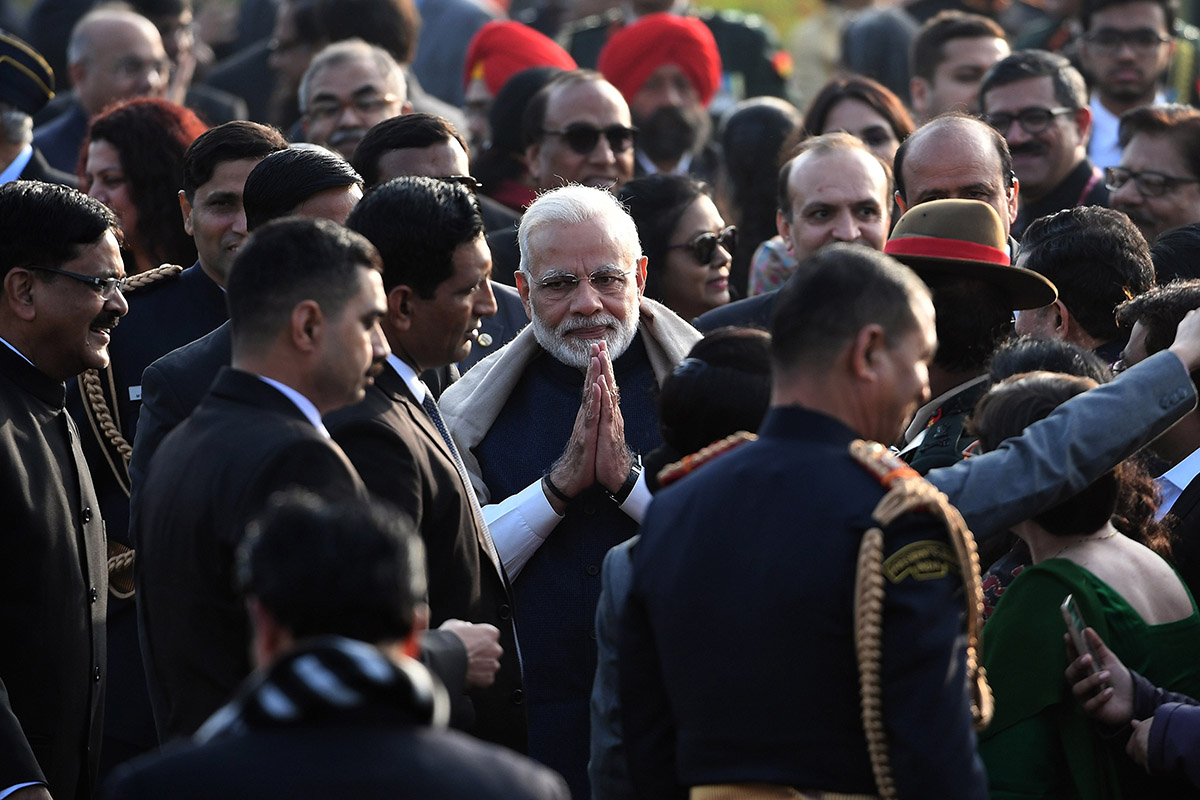The main conclusion drawn from the visit by ASEAN leaders to India last week is that India is finally recognising ASEAN’s geostrategic potency and wants to capitalise on it. In doing so, India must play catch up with China. The Chinese already have a head start within the region – primarily through infrastructure investments via the Belt and Road Initiative (BRI).
But India – which has long been apprehensive of China’s intentions with the BRI – thinks it can dangle a better carrot to entice ASEAN.
Indian Prime Minister, Narendra Modi in a grand gesture, invited ASEAN heads of government and state as chief guests for his nation’s Republic Day celebrations. It was the diplomatic equivalent to a teenager standing outside the bedroom window of a girl with a boombox over his head, blaring Peter Gabriel’s “In Your Eyes” in an effort to woo her.
India extends its influence
The visit also marked the 25th anniversary of the ASEAN-India dialogue partnership, a significant milestone for the two. To commemorate this milestone, the Delhi Declaration was adopted – under the theme of “Shared Values, Common Destiny” – marking a commitment towards deepening ASEAN-India ties.

The content of the declaration reveals India’s soft power approach in engaging the region. Modi understands that the way to a nation’s heart is through its purse strings but instead of the Chinese model of aggressively pumping huge amounts of financial capital into such nations, he has taken a slightly different route.
Under the Act East policy, Modi has aspired to raise India’s strategic profile in a region dominated by Beijing’s overbearing presence. In trying to steer clear of the Chinese approach, he has opted to foster closer relations with ASEAN member states by way of enmeshing India and ASEAN within the intricate web of the international liberal order. One way of doing so is through the Make in India initiative, where India is marketed as being, “open for business” and ready to welcome investments from foreign countries like ASEAN’s member states.
Nevertheless, for India to position itself as a formidable geopolitical player in the region, it must flex its financial muscles to a certain degree – perhaps not to the extent of the billions spent by China to develop infrastructure under the BRI. During Modi’s bilateral meetings with Philippine President, Rodrigo Duterte, he expressed interest to synergise with Duterte’s Build-Build-Build infrastructure development program. Besides that, he was also thanked by the Prime Minister of Vietnam, Nguyen Xuan Phuc for satisfactory operationalisation of a US$100 million line of credit under which an Indian company, Larsen & Toubro (L&T) was awarded a contract to manufacture Offshore Patrol Vessels (OPVs). Both countries agreed on another US$500 million line of credit to be operationalised soon.
The latter deal with Vietnam is also evidence of India aspiring to develop closer maritime ties especially with countries involved in the South China Sea dispute – as a way of countervailing Chinese maritime presence in the region. In his speech during the opening of the summit, Modi stressed that maritime cooperation within the domains of security and freedom of navigation would be a key area of focus. It was also enshrined within the Delhi Declaration that all parties – including India – are aspiring for a swift completion of the Code of Conduct in the South China Sea (COC).
It is also helpful that India and the Southeast Asian region share longstanding historical and cultural ties which were highlighted throughout the time the ASEAN leaders were in India. The Hindu epic, Ramayana which, over centuries has been expressed and interpreted in many different Southeast Asian cultures was a key feature during the opening ceremony of the ASEAN-India commemorative summit.
On top of that, the awarding of Padma Shri awards – India’s fourth highest civilian honour – to one individual from every ASEAN member state was also seen as a technique of soft power diplomacy. In a tweet, a spokesperson for the Ministry of External Affairs called it an “…unprecedented and symbolic gesture of India-ASEAN bonding.”
Right now, the possibilities for ASEAN are almost endless – with its many suitors trying their best to court the association to come over to their respective sides. However, leaders of ASEAN member states must be reminded that such wooing may invite the temptation for them to pick a side and in doing so, sacrifice ASEAN’s inherent centrality.
By adopting an accommodating approach and not picking sides, ASEAN is well placed to reap the benefits of working with China and India to grow the region and protect its sovereignty at the same time.
Recommended stories:
